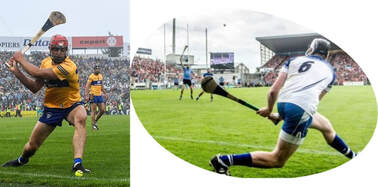
The Munster senior hurling final was a game between Limerick and Clare. Normal time in the final ended with an uncontested sideline strike by Clare's Tony Kelly (visuals here). This score took the game to extra-time.
A score from such an uncontested strike is a rare occurrence. Approximately 2.5% of the almost 300 such uncontested sideline strikes, from the 11 games, resulted in a direct score. It is probably fair to say that half of these 300 strikes were not within range of a potential score. The longer range scores came from Austin Gleeson, Peter Duggan and Noel McGrath with efforts of 50-55m from their opponents' endline.
For the same reasons as presented in a previous post (Going for it), it is difficult to establish the number of attempts at scores. There can be a gap between intention and execution. The number of strikes that crossed the opponents endline but outside the scoring zone was also approximately 2.5% of the total. With this measure, the conversion rate is roughly 50%.
Allowing for the small numbers, and the difficulties with attributing intentions, the teams most likely to shoot directly for a score were Clare, Tipperary, and Waterford. Limerick, the Munster (and All-Ireland) champions, and by far the most successful team in the last five years, seem to refuse the option of going direct for a score. Are there any lessons for players and coaches? What are the likely implications for the way the game and associated practices will evolve? Is it in line with what the supporters and TV audiences want to see? Are there lessons for the legislators of the game?
 RSS Feed
RSS Feed